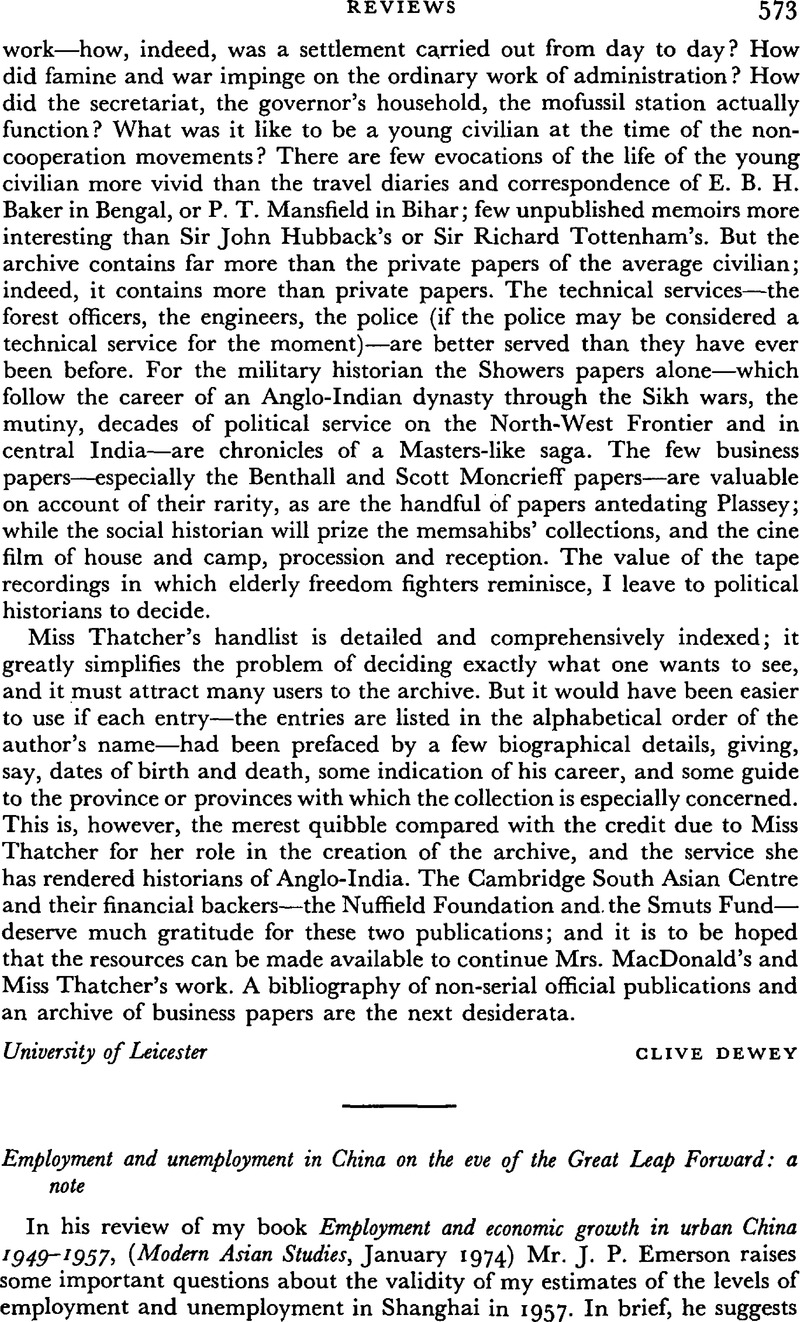No CrossRef data available.
Published online by Cambridge University Press: 28 November 2008

1 Mr. Watson, Andrew has pointed out to me that in 1941, there were 164,000 workers registered with the Shanghai office of the trade association for inland waterway workers. This gives some idea of the magnitude of this group in the 1950s, although it is possible that many of these workers were resident in villages outside the Shanghai Municipal boundaries.Google Scholar
2 Lieu, D. K., The growth and industrialisation of Shanghai, Shanghai: China Institute of Pacific Relations, 1936, p. 228. Wen hui pao (Cultural contact daily) 8 March 1957.Google Scholar
3 Hsin wen jih pao (Daily news) 3 01 1957.Google Scholar
4 It is interesting to find that even in 1974, the turning point in the development of female labour in small factories is still located in 1958. ‘Street factories’ in Some basic facts about China, China reconstructs, January 1974 (supplement), pp. 34–37.Google Scholar
5 The data on migration and the growth of employment are quoted in Chapter 2 and Appendix I of the book.
6 Turnham, David, The employment problem in less developed countries: a review of the evidence, Paris: O.E.C.D., 1971.Google Scholar